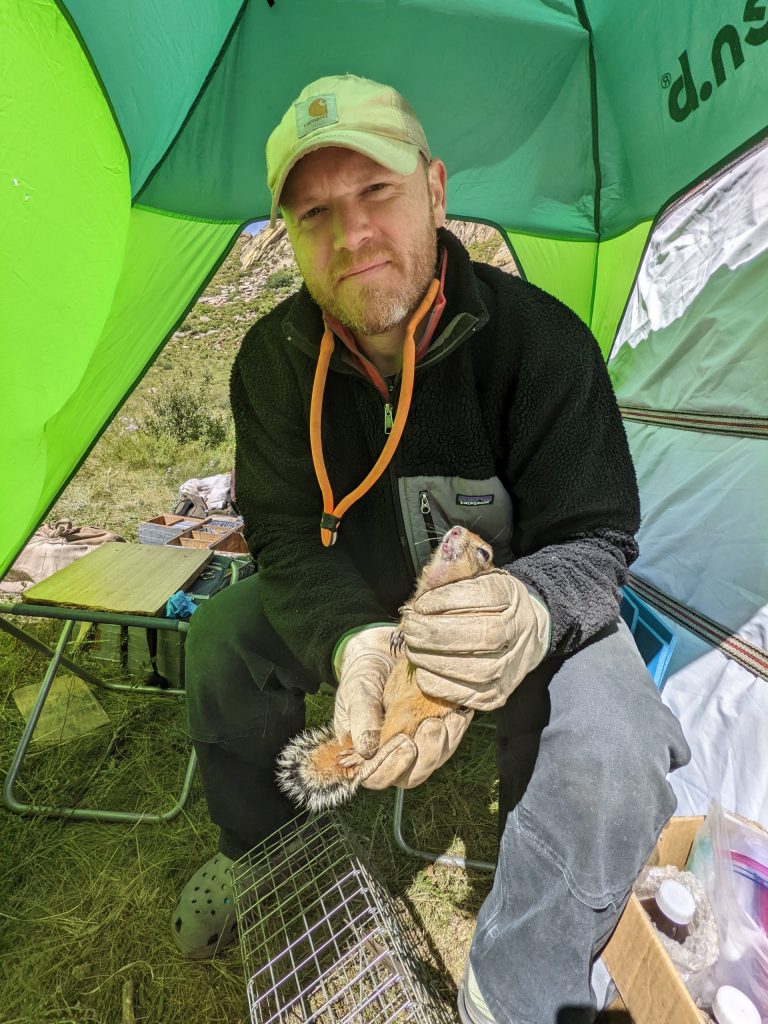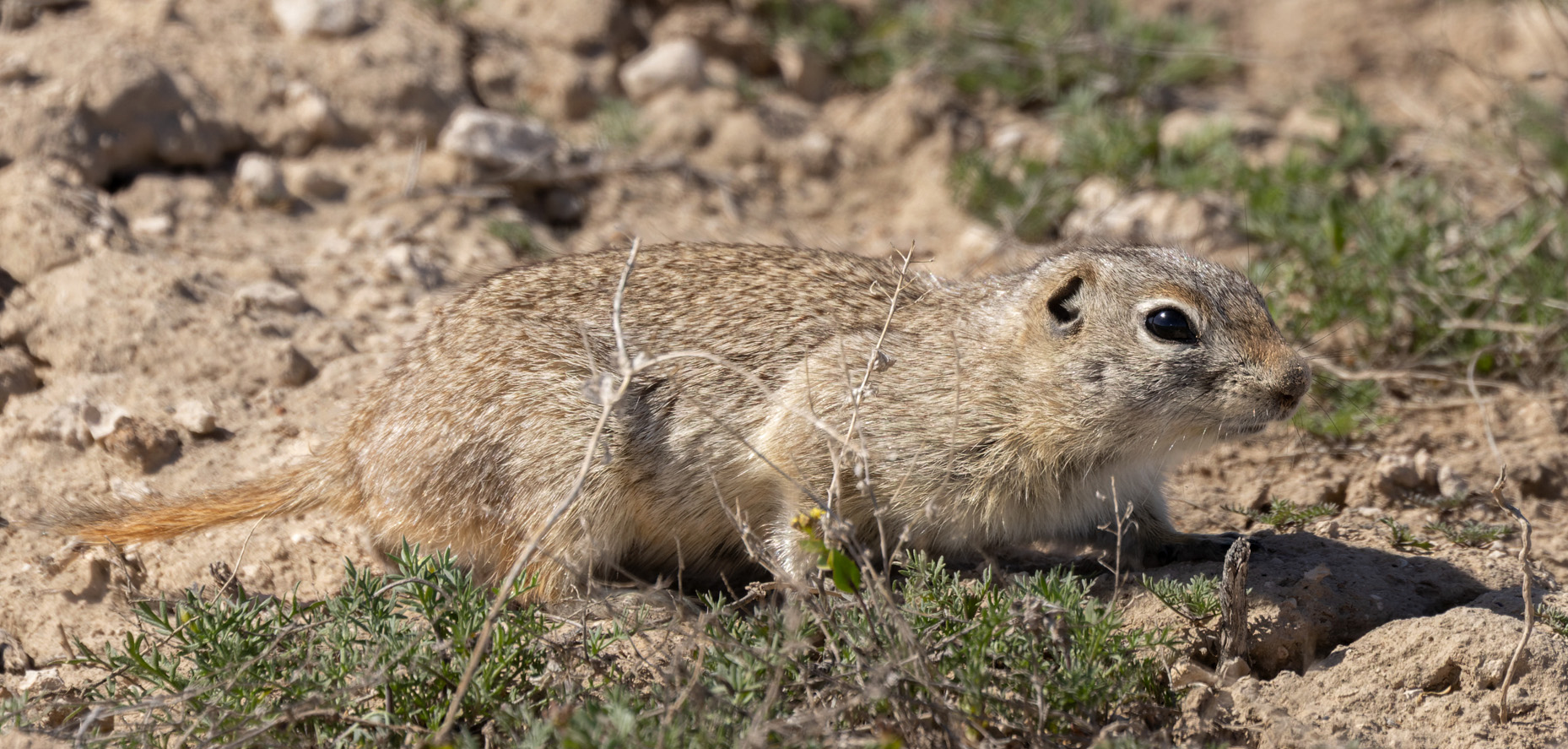UNC Greensboro’s Dr. Bryan McLean and his collaborators have identified a new mammal in North America. Urocitellus idahoensis, the Snake River Plains ground squirrel, is named for its singular habitat in southern Idaho.
Squirrels are one of the largest families of mammals across the globe. While most Americans are familiar with tree squirrels, fewer know that the squirrel family also includes more down-to-earth rodents such as chipmunks, groundhogs, and prairie dogs – collectively known as ground squirrels.
“Ground squirrels became really diverse 10 to 12 million years ago,” explains McLean, a mammalian evolution expert in UNCG’s Department of Biology. “As the world dried out and slowly cooled, grass-dominated ecosystems spread across most continents, favoring organisms that could thrive in open habitats.”
Hidden in plain sight

The new Snake River Plains ground squirrel was previously believed to be a subspecies of the Piute ground squirrel, which makes its home in the Great Basin watershed that spans much of Nevada and portions of Utah, Oregon, California, and Idaho.
To the untrained eye, the Piute and Snake River Plains ground squirrels may seem identical.
“They were hiding in plain sight, mostly because they look the same as their close relatives,” says McLean. “They’re part of a group of six species that are all pale, mostly unmarked, running around in the desert and living in burrows. Because they’re in these open habitats, they tend to be very cryptic in their coloration.”
The sand-colored mammals are built to burrow. “They have really tiny ears, like a chipmunk, short limbs but elongated claws for digging, and a really short tail.”
Forming underground colonies of up to a hundred individuals per acre, these squirrels are also quieter than their tree-climbing cousins, making single or multi-syllabic squeaks and chips. Most of their vocalizations are alarm calls, as they perch like meerkats outside of their burrows on watch for predators.
The main difference lies within their genome.
“When mitochondrial DNA differs by more than 3 to 5%, that’s one indicator of cryptic speciation,” says McLean. In their Journal of Mammalogy publication, McLean and his collaborators from the University of Utah, University of New Mexico, University of Florida, and the U.S. Fish and Wildlife Service show that the Snake River Plains ground squirrel’s mitochondrial DNA is 4% divergent from the Piute ground squirrel. “There was also evidence of major differences in their nuclear genome.”
Some of the genetic differences likely stem from the new squirrels’ range restrictions. They are found below the mountains of Idaho but above the Snake River, separated from the wider-ranging, more numerous Piute squirrels to the south of that body of water.
“But we found that it was very different,” says McLean. “The Piute squirrel isn’t even its closest relative.” Instead, he says, the new species seems most closely related to the federally endangered Idaho ground squirrel, Urocitellus brunneus.

A new calculus for conservation
The discovery could reshape conservation efforts surrounding the areas’ ground squirrels.
“They inhabit some of the most rapidly urbanizing areas in the country,” says McLean. Invasive grasses, such as cheatgrass, are degrading these habitats. Ground squirrels are also susceptible to plagues that can wipe out entire colonies.
Human interaction threatens Snake River Plains ground squirrels in multiple ways, he explains. Ground squirrels are often hunted because they can destroy gardens. Similarly, ranchers fear livestock could break their limbs by stepping into their burrows. Then there’s a regional culture of shooting ground squirrels for recreation.
Together, these issues are less likely to impact the wider-ranging and more numerous Piute squirrels, but they could severely damage the small Snake River Plains population, says McLean.
“It goes from being something you might not give a second thought to something very geographically restricted and unique that demands conservation and management attention.”
A difficult find
“There are approximately 430 identified mammals in North America,” McLean says. New species are still being described, but the process takes years.
“We’re finding a lot of new mammals in places like the tropics that just have high mammal diversity, but in the higher latitudes like North America, it’s more labor intensive,” he says.
“Mammals tend to have larger ranges closer to the poles, a phenomenon known as Rapoport’s Rule. To determine if you have different species hidden within similar morphologies, you need a lot of specimens from across their ranges.”
By Nikkola Brown & Sangeetha Shivaji
Field photography courtesy of Dr. Bryan McLean, Snake River Plains ground squirrel photography from myworldofbirdphotography via iNaturalist.org






